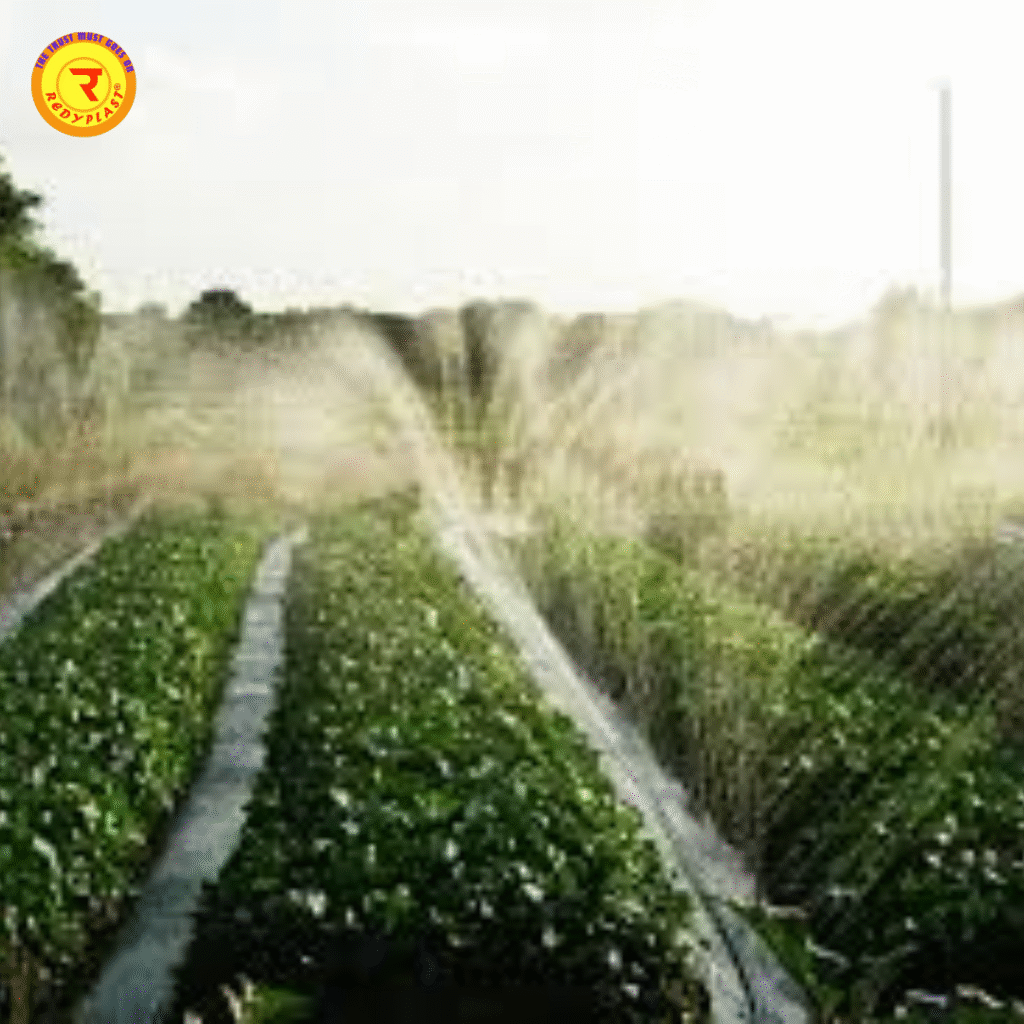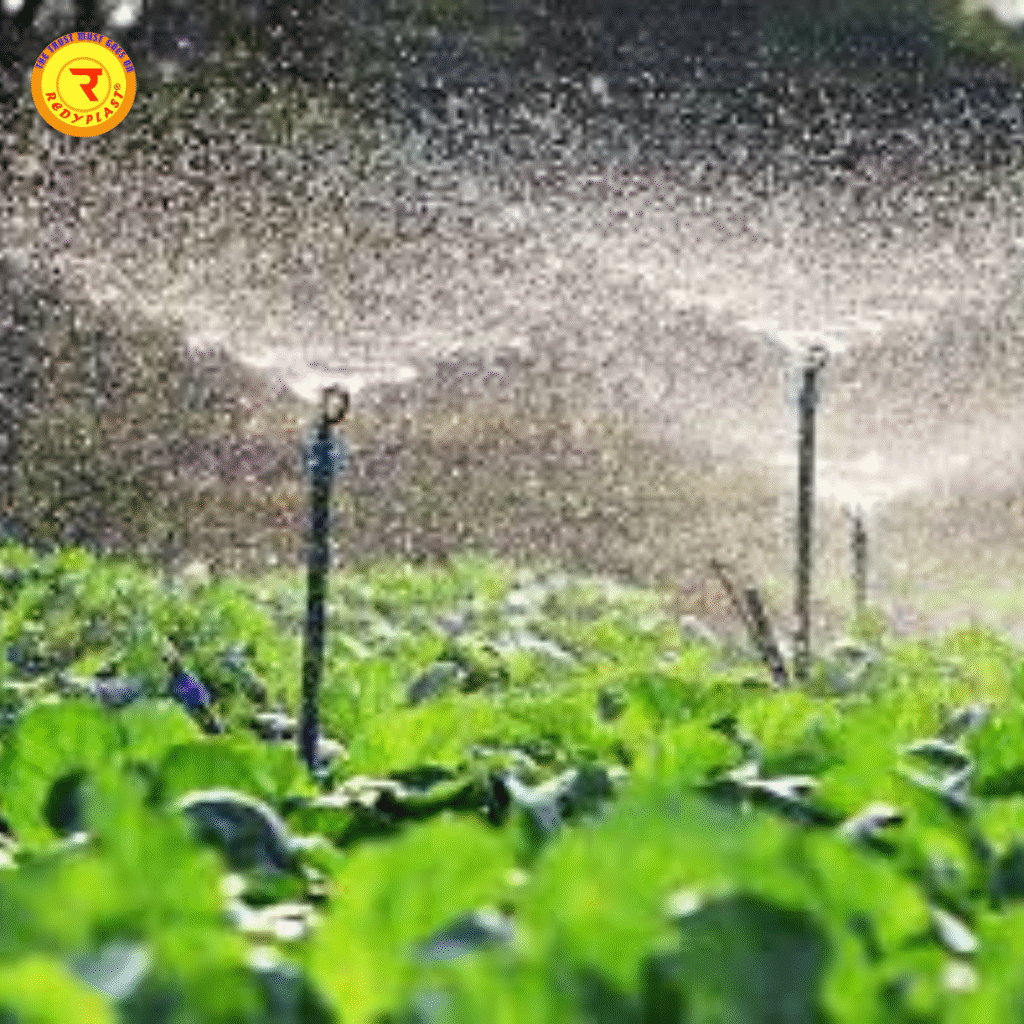Currently Empty: ₹0.00
Efficient irrigation is one of the most crucial factors for successful farming in India. With a majority of Indian farmers relying on monsoon rains, managing water supply effectively remains a significant challenge. The rain irrigation system for Indian farms has emerged as a modern solution that promises to improve crop health and yield by mimicking natural rainfall patterns. However, is it really the perfect solution for your crop? In this in-depth guide, we explore the benefits, limitations, and practical applications of the rain irrigation system for Indian farms, specifically focusing on mixed and monsoon-based crop growers.
What Is a Rain Irrigation System for Indian Farms?
A rain irrigation system for Indian farms is an advanced irrigation method designed to simulate natural rainfall. It distributes water evenly across the entire farm area using a network of pipelines, pumps, and strategically placed sprinklers or nozzles. Unlike traditional surface or drip irrigation, the rain system offers broad coverage, which is especially useful for mixed cropping and large-scale farming.
How It Works
Water is sourced from surface reservoirs, borewells, or harvested rainwater storage. It is then pumped through a system of LDPE irrigation pipes, filters, and connectors to sprinklers installed across the farm. These sprinklers distribute the water uniformly, replicating the soft and consistent fall of natural rain. The system can be automated or manually operated depending on the farm size, farmer expertise, and investment capacity.

Major Benefits of Rain Irrigation System for Indian Farms
Uniform Water Distribution
One of the biggest advantages of the rain irrigation system for Indian farms is its ability to distribute water evenly over the entire field. This prevents dry spots and overwatered areas, resulting in uniform crop growth and higher yields. Crops such as rice, maize, and oilseeds especially benefit from this consistent moisture supply.
Ideal for Mixed Cropping Systems
Indian farms often practice mixed cropping, where multiple crops are cultivated together. The rain irrigation system for Indian farms is highly effective for such setups, as it does not discriminate between plant types. Paddy fields, oilseed plots, and pulses can all receive sufficient water from a single, well-designed system.
Adaptable to Soil Types
Different soils react differently to irrigation. Sandy soils require more frequent but lighter watering, while clay soils need slower water application to prevent waterlogging. The rain irrigation system for Indian farms can be customized by adjusting sprinkler types, pressure, and distribution patterns to accommodate various soil characteristics.
Reduces Manual Labor
Automation plays a key role in the rain irrigation system for Indian farms. Once set up, it requires minimal manual intervention. Automated timers and pressure controls ensure that water is delivered consistently, reducing the need for constant farmer supervision and manual watering.
Supports Sustainability
Using the rain irrigation system for Indian farms helps in sustainable farming by preventing soil erosion and preserving soil structure. Uniform water distribution minimizes runoff and keeps nutrients in place, which is essential for long-term soil health.
Efficient During Monsoon and Dry Periods
The rain irrigation system for Indian farms is designed to work effectively both during the monsoon season and dry spells. It supplements erratic rainfall by providing consistent water supply, ensuring crops get what they need during critical growth stages.

Limitations of Rain Irrigation System for Indian Farms
High Initial Investment
The installation of a rain irrigation system for Indian farms requires a significant upfront investment in infrastructure such as pumps, sprinklers, pipelines, and automation devices. For small-scale farmers, this can be a financial burden unless supported by government subsidies.
Dependence on Power Supply
A stable electricity supply is crucial for operating pumps and automation systems. In rural areas where electricity is inconsistent, system performance may suffer, making it less reliable for some farmers.
Water Source Quality
The effectiveness of the rain irrigation system for Indian farms depends on the quality of the water source. Poor-quality or untreated water can lead to clogged sprinklers and frequent maintenance issues. Advanced filtration systems are essential to maintain system efficiency.
Evaporation Losses
Compared to drip irrigation, the rain irrigation system for Indian farms has higher evaporation losses, especially in hot and dry climates. Farmers are advised to schedule irrigation during early mornings or late evenings to minimize this loss.
Unsuitable for Certain Crops
Certain crops, such as tomatoes and pulses, are prone to fungal diseases when their leaves remain wet for extended periods. For these crops, drip or furrow irrigation remains a better choice than the rain irrigation system for Indian farms.

Ideal Crops for Rain Irrigation System in Indian Farming
The rain irrigation system for Indian farms is particularly effective for:
- Paddy (Rice)
- Maize
- Oilseeds (Groundnut, Soybean)
- Pulses (Moong, Urad)
- Green Fodder Crops
These crops benefit from the wide-area coverage and uniform moisture provided by the system, which helps maintain crop health and productivity even during erratic monsoon patterns.
Practical Steps for Successful Implementation
Conduct a Proper Site Survey
A thorough assessment of the farm’s topography, soil type, and water availability is crucial before setting up the system. This ensures optimal layout and prevents future operational issues.
Use High-Quality REDYPLAST Components
Choosing durable components like REDYPLAST Rain Pipes, LDPE irrigation pipes Telangana, and advanced irrigation connectors for farming significantly reduces the risk of system failure and lowers long-term maintenance costs.
Regular Maintenance Practices
- Clean filters regularly
- Inspect sprinklers for blockages
- Repair leaks promptly
Following a maintenance routine helps avoid common irrigation mistakes in Indian farming such as uneven water distribution or system breakdowns.
Monitor Soil Moisture Accurately
Using soil moisture sensors provides precise data, enabling farmers to irrigate only when necessary. This prevents over-irrigation and optimizes water usage.
Plan for Seasonal Variation
Design the system to adjust to seasonal changes. Timers and pressure settings should be adaptable to accommodate monsoon rains and dry periods, enhancing the system’s effectiveness.
Why REDYPLAST Rain Systems Are the Trusted Solution
REDYPLAST offers specialized solutions tailored for the rain irrigation system for Indian farms. With a range of high-quality products, REDYPLAST removes complexity from installation and operation.
- Built for Indian climate conditions
- Easy-to-install Mini Kits for small and medium-scale farmers
- Proven durability and reliability
- Expert technical support to guide farmers
Thousands of farmers across Telangana and India rely on REDYPLAST Rain Systems to eliminate irrigation mistakes in Indian farming and achieve sustainable yields.
Real Farmer Success Story: Telangana
Lakshmi, a small-scale farmer in Telangana, struggled with traditional irrigation methods, wasting water and experiencing uneven crop growth. After adopting the rain irrigation system for Indian farms equipped with REDYPLAST components, Lakshmi experienced:
- 50% reduction in water use
- Uniform growth across her farm
- Reduced labor costs
- Healthier, pest-free crops
Her success illustrates the effectiveness of rain systems in solving common irrigation problems faced by Indian farmers.

The Future of Rain Irrigation System for Indian Farms
As climate change continues to disrupt traditional farming practices, the rain irrigation system for Indian farms becomes increasingly crucial. Supported by government subsidies and private initiatives, this technology is rapidly spreading across India, offering a reliable and sustainable alternative to outdated irrigation methods.
Adopting a rain system helps Indian farmers:
- Prevent irrigation mistakes in Indian farming
- Optimize water usage
- Improve yield and farm sustainability
👉 Explore REDYPLAST Rain Systems today to revolutionize your farming practices and enhance productivity.
